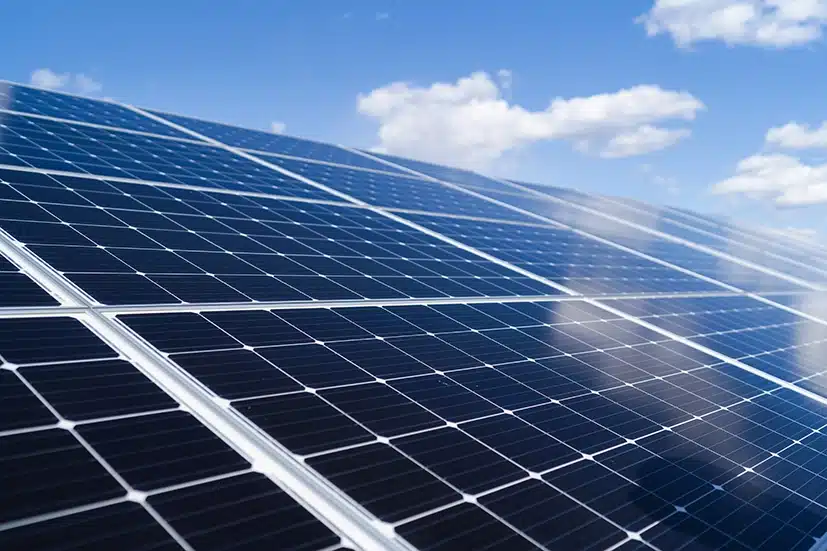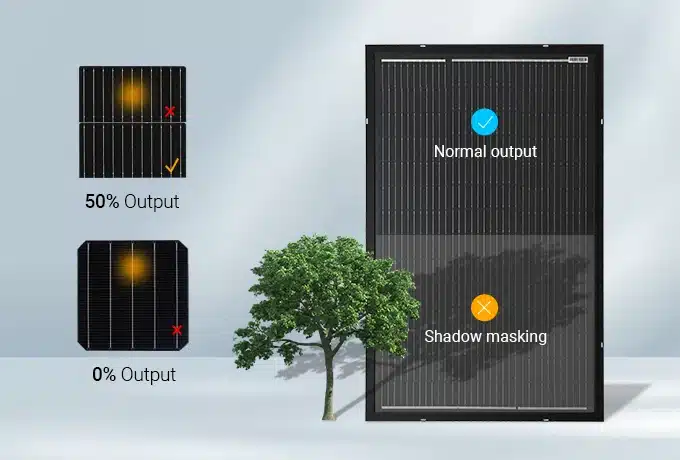As solar energy becomes increasingly popular, solar power has emerged as one of the most environmentally friendly household solutions. A common question that arises is whether solar panels must rely on direct sunlight to operate efficiently. The answer lies in the basic principles of solar technology and the factors that influence its performance. Solar panels are devices that convert solar energy into electricity by capturing photons through a series of photovoltaic cells.
Do Solar Panels Need Direct Sunlight?
Although solar panels perform best under direct sunlight, they do not necessarily require it. Solar panels can still generate electricity even without direct sunlight because photons are present in both direct and indirect sunlight. However, factors such as shade, clouds, rain, and snow may reduce their output, but they won’t completely stop the system from generating power.
Indirect sunlight refers to sunlight that has been reflected off another surface before reaching the solar panel. While this type of light is less efficient than direct sunlight, it can still provide energy. Therefore, solar panels can function in areas with more shade or variable weather, though the energy output might not be as high as in direct sunlight.

Does Shade Affect the Power Output of Solar Panels?
Solar panels can still generate electricity in shaded areas, but their performance will be affected. If your home is surrounded by trees or buildings that cast shade on your roof, the solar panels’ energy output will be reduced. To compensate for this, you may need to install additional solar panels. A professional solar installation team can evaluate the shading of your roof and design the optimal system based on local weather, building orientation, and roof tilt.
It’s worth noting that Sungold Solar has introduced innovative technology to address power losses caused by shading. This technology not only reduces the power loss of the entire solar panel due to partial shading but also effectively prevents the formation of hot spots, which can lead to solar panel short-circuits and reduced lifespan. This technology has also been implemented in the newly launched lightweight solar panel series, PA621.
Do Bifacial Solar Panels Need Direct Sunlight?
Bifacial solar panels can capture solar energy from both the front and back sides, making them less dependent on direct sunlight compared to traditional monofacial solar panels. Although bifacial panels perform most efficiently under direct sunlight, they can still generate electricity effectively under diffuse and reflected light.
How Bifacial Solar Panels Work The front side of a bifacial solar panel faces the sun, while the back side can capture reflected light from surfaces like the ground, walls, or other objects. Even without sufficient direct sunlight, bifacial panels can increase energy output by utilizing reflected light and ambient diffuse light. This effect is particularly noticeable when reflective materials are used on the ground or in snowy environments, where the back side can significantly boost energy production.
Impact of Direct Sunlight Like monofacial panels, bifacial solar panels perform best under direct sunlight, especially in sun-rich environments where both the front and back can fully absorb light. However, due to their unique design, bifacial panels outperform traditional ones in cloudy or shaded conditions, as they can better utilize indirect and reflected light to generate electricity.
=Bifacial solar panels are not entirely dependent on direct sunlight and can effectively harness indirect and reflected light. While direct sunlight provides the highest energy efficiency, bifacial panels can still produce considerable electricity even without direct sun exposure.

Can Vertical Photovoltaic Systems Utilize Direct Sunlight?
Vertical photovoltaic systems can utilize direct sunlight, but they are not entirely dependent on it. These systems are designed to be installed vertically, primarily facing east and west, making them especially suitable for environments with limited space, such as urban areas. Vertical photovoltaic systems effectively capture low-angle sunlight in the mornings and evenings, without relying solely on direct sunlight at midday.
Light Utilization in Vertical Photovoltaic Systems While direct sunlight is important for maximizing energy production, vertical photovoltaic systems can still generate electricity without direct sunlight. They are capable of capturing diffuse light and reflected light, maintaining good efficiency even in cloudy or low-light conditions. Additionally, the vertical installation allows the panels to better utilize low-angle sunlight, particularly when the sun is near the horizon.
Impact of Direct Sunlight Vertical photovoltaic systems are not entirely dependent on direct sunlight. Although direct sunlight enhances energy production, it can still generate power by capturing diffuse and reflected light from the surrounding environment. This design makes vertical photovoltaic systems highly applicable in urban facades or areas with space constraints.
How Do Clouds Impact Solar Panels?
Since solar panels depend on sunlight to generate power, clouds can reduce their efficiency. Thick, low clouds tend to reflect sunlight, sending it back into space, while thinner, high-altitude clouds allow more sunlight to reach the panels. In some cases, a phenomenon known as the “cloud lens effect” can occur, where ice crystals in high-altitude clouds magnify sunlight, boosting power generation.
Can Solar Panels Work on Rainy Days?
Solar panels can still produce electricity on rainy days, although their output is reduced by 40% to 90%, depending on cloud cover. Despite this reduction, rain provides a secondary benefit—it helps clean the surface of the panels by removing dust and debris. This natural cleaning effect can improve performance once the storm passes, particularly in dusty environments.
Do Solar Panels Generate Electricity in the Snow?
Some people believe that solar panels cannot work in snowy or cold weather. In reality, solar panels can still generate electricity even when it snows lightly, as sunlight can pass through a thin layer of snow. Moreover, solar panels often perform better in cold temperatures since overheating reduces their efficiency. While heavy snow may temporarily block sunlight, solar panels are generally efficient at shedding snow, so this issue rarely persists for long. As the snow melts, it also helps clean any accumulated dust from the panels.
Key Point
While solar panels work best in direct sunlight, they can still generate electricity under shaded, cloudy, or rainy conditions. Photons are present in both direct and indirect sunlight, allowing solar panels to continue functioning. However, to maximize their efficiency, it’s important to ensure that the system receives as much direct sunlight as possible. Various weather and shading factors can affect the output of your solar system, so consulting with a professional installer is essential for designing the most suitable system for your home.












